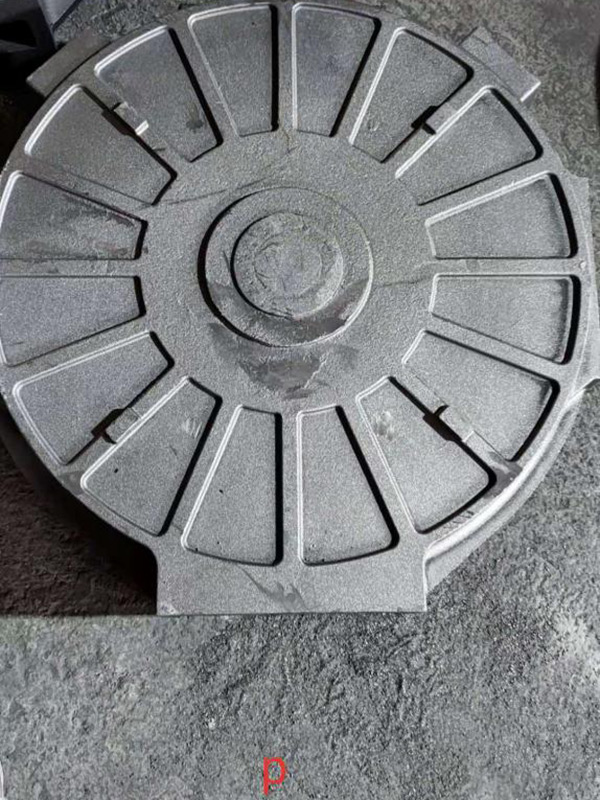Sand Used in Sand Casting An Integral Component of Metallurgy
Sand casting, one of the oldest and most versatile manufacturing processes, involves the use of sand as a primary material to create molds for metal casting. This technique has been employed for thousands of years and remains one of the most widely used methods in the foundry industry due to its adaptability, cost-effectiveness, and ability to produce complex shapes with excellent surface finishes. Central to this process is the type of sand used, which significantly influences the quality of the finished cast products.
Types of Sand Used in Sand Casting
The sand used in sand casting primarily consists of silica (silicon dioxide) and is known for its granular structure and refractory properties. The most common types of sand used in the foundry industry include
1. Green Sand This is the most traditional form of sand used in casting. It consists of silica sand mixed with clay and water, which helps bind the sand grains together. Green sand molds are easy to produce, and they remain porous enough to allow gases generated during the metal pouring to escape. This property is crucial as it reduces defects in the final cast.
2. Dry Sand Unlike green sand, dry sand has had its moisture removed. This method enhances the strength of the mold and is often used for larger castings that require more support. Dry sand can withstand greater temperatures, making it suitable for high-temperature alloys.
3. System Sand This type of sand is used in automated molding processes. It is cleaned and reused multiple times, making it a more environmentally friendly option. The benefit of system sand is that it provides consistent quality since it can be treated to maintain its properties.
4. Shell Sand This sand consists of fine particles mixed with a thermosetting resin. When heated, the resin bonds the sand into a thin, hard shell, which serves as a mold. Shell sand casting provides excellent surface finishes and dimensional accuracy and is ideal for intricate designs.
5. Coated Sand To improve the performance of the sand, particles can be coated with a resin or other binding agents. Coated sands provide superior thermal stability and reduce the likelihood of mold collapse during casting.
sand used in sand casting

Importance of Grain Size and Shape
The grain size and shape of the sand play a critical role in determining the characteristics of the mold. Generally, finer sands produce smoother surface finishes but may have reduced strength. Conversely, coarser sands can provide increased strength but may leave a rougher texture on the casting. The roundness of the sand grains also affects the mold's permeability and strength. Ideally, a mix of sand grains of different sizes—often referred to as a graded mixture—can optimize both strength and surface finish.
Additives and Their Effects
To enhance performance, various additives are often introduced to the sand mixture. These can include
- Clays Clays improve cohesiveness and help retain moisture within the mold, crucial for green sand. - Chemical Binders These synthetic materials enhance the sand’s strength and thermal resistance, particularly in dry and shell sand systems. - Additives for Surface Finish Certain agents can be added to improve the finish of the casting directly, reducing the need for secondary machining processes.
Environmental Considerations
With increasing awareness of environmental issues, the foundry industry is facing pressure to adopt more sustainable practices. The reuse of sand and reduction of waste is paramount. Processes such as sand reclamation—where used sand is treated and reused for new molds—are becoming standard practice. Innovations in the development of eco-friendly binders and the use of alternative materials are actively being researched.
Conclusion
The sand used in sand casting is not merely a backdrop for the molding process; it is a fundamental material that significantly affects the quality and characteristics of the final product. As advancements in material science and technology continue to evolve, the types of sand and the methods used in sand casting will likely keep improving. The continued innovation in this field is essential, not only for enhancing manufacturing efficiency but also for meeting the demands of an ever-evolving industrial landscape. Understanding the properties and behaviors of different sands will remain crucial for engineers and foundry workers as they strive to produce high-quality castings that meet the rigorous standards of modern applications.
Post time:Samh . 07, 2024 05:45
Next:precision sand casting
